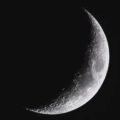This combined 28-30th installment in an ongoing series of updates from Harvard Astronomer Avi Loeb, head of The Galileo Project, documents the team’s expedition to attempt the recovery of an interstellar object from the floor of the Pacific Ocean. This entry covers Day 14 (June 25, 2023) and Day 15 (June 26, 2023) of the team’s expedition.
Diary of an Interstellar Voyage, Report 28 (June 25, 2023)
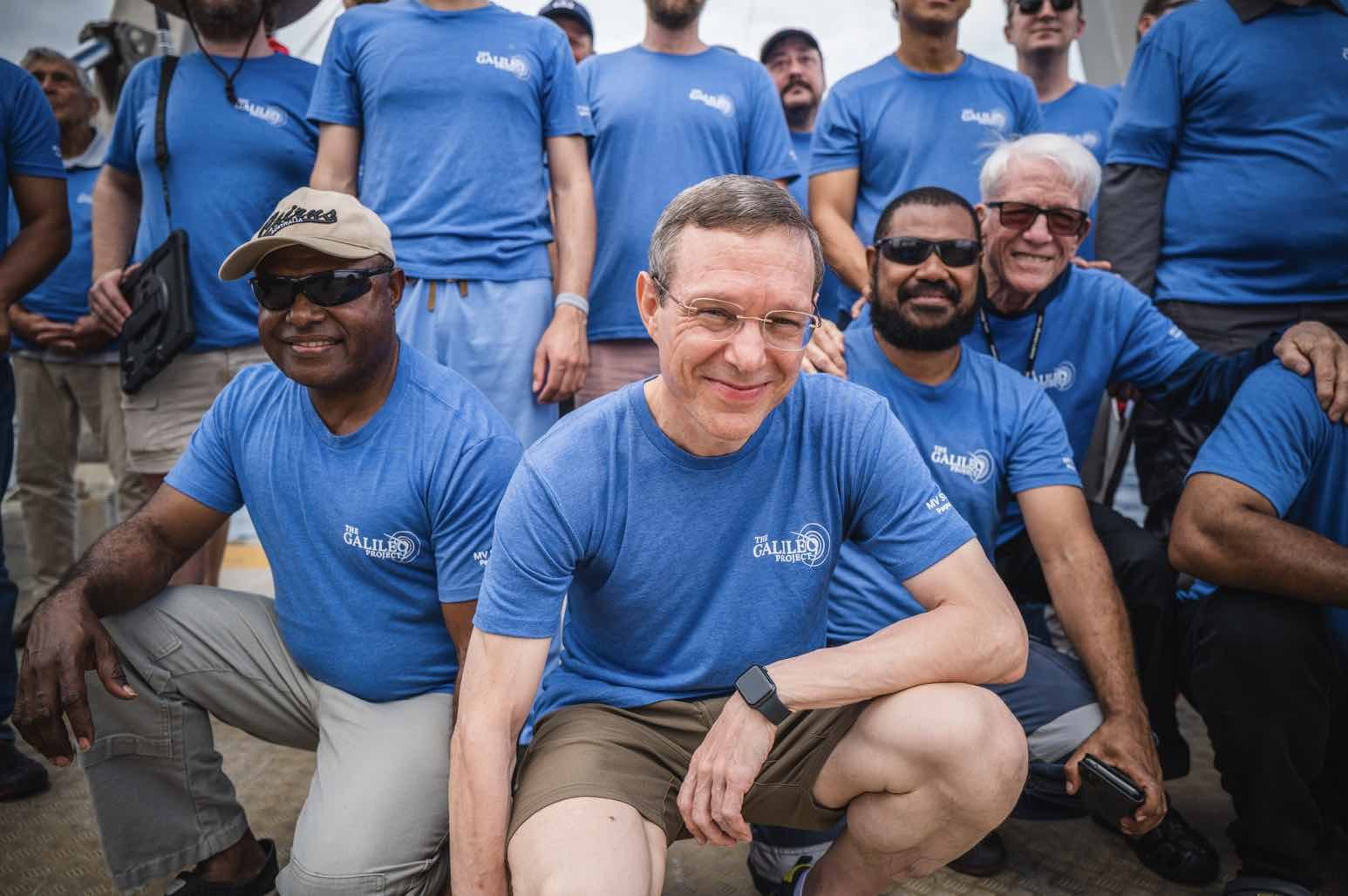

Every spring, I love watching flowers blossom in my backyard. Their diverse colors on the backdrop of trimmed grass deliver a hopeful message that the most beautiful things in life are different from the background.
The Interstellar Expedition to retrieve spherules melted by the fireball of the first recognized interstellar meteor, IM1, serves an important educational mission.
First, it demonstrates that science can be exciting. Every day over the past week, about 30,000 people read my expedition diary reports. One of the readers explained that this is the first time he had witnessed how science is actually done as an iterative learning process guided by evidence.


For example, when we first noticed white paint on the front of the sled, we thought that the sled may have bumped into human-made paint thrown off the deck of a ship. This idea was ruled out as soon as we checked the composition of the paint. The test implied that the paint is biological in origin. Our conjecture was wrong, and by testing it, we learned something new.
Most of the time, science is a learning process of eliminating wrong conjectures based on evidence. This process could be painful to our ego if it demonstrates our incorrect conjectures. But correcting them is at the heart of gaining new knowledge and adapting to reality the way it is. Most importantly, extraordinary evidence requires extraordinary funding.
In the case of IM1, the Interstellar Expedition received funding at 1.5 million dollars and delivered the evidence we were seeking. In the case of supersymmetry, the Large Hadron Collider was funded at ten billion dollars and did not find the evidence it was seeking.
In addition to educating the public, the expedition educates scientists that taking risks by pursuing innovation can pay off on ideas outside the beaten path of the mainstream. For every large collider, it is possible to fund tens of thousands of projects on the scale of the Interstellar Expedition.
Innovation stems from young minds that do not worry about career risks when deviating from the mainstream. Senior scientists should let many flowers bloom and enjoy the view.
It is unclear to me why scientists present their findings as established truths in press conferences, even though the process of learning is full of path corrections by trial and error. Avoiding the risk of being wrong is unrealistic. Similar to GPS navigation systems, progress in science is all about “recalculating” when circumstances are unfamiliar.
The anomalous properties of our spherules may trigger a recalculation. For example, a lack of nickel may flag other meteorites as potentially interstellar.
We are now planning the next expedition to search with a 30-kilohertz sonar for any large relics of IM1 in the region where friction brought them down to the ocean floor. At the conclusion of a meeting with the expedition leader, I stated, “The good news is that we are planning our next steps together because we like working with each other.”
The following morning Art Wright looked over my shoulder as I was typing a new essay. He wanted to verify that I do not have a ghostwriter. I said: “Art, there is nothing for you to verify. I am an ordinary person. What you see is what you get.” He replied: “You are not an ordinary person. That fact, I know for sure.” Let me confess: I think the same about Art, as well as about key members of our exceptional expedition team. We will keep on searching together for the relics of interstellar meteors as long as we can. This will open up a new window into astronomy by looking through microscopes instead of telescopes.


Progress is not about showing off but about taking risks. The success of showing off stems from interaction with people, whereas risk-taking is gauged by interaction with nature from a humble standpoint akin to a beginner’s mind.
By now, we have 30 spherules. I just calculated their total mass, and it adds up to 3.2 milligrams.
The success of the Interstellar Expedition implies that rather than have an opinion about interstellar objects based on solar system objects, we should seek the answers at the bottom of the ocean. Put differently, milligram-mass spherules teach us cosmic modesty.
Diary of an Interstellar Voyage, Report 29 (June 26, 2023)
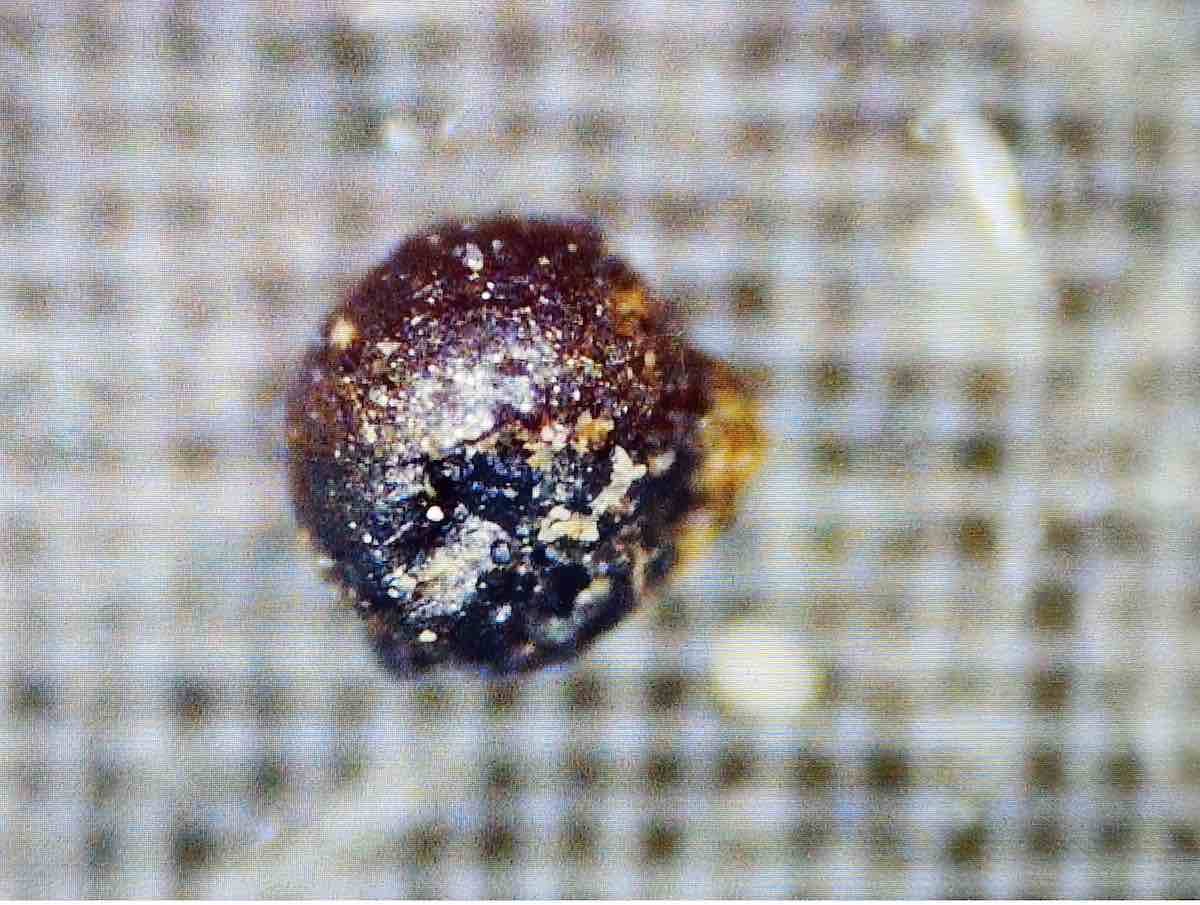

Good news. Run 17 went far north away from the likely path of the first recognized interstellar meteor, IM1, and there was only one spherule found of a different composition than the other spherules, despite the long integration time along this line. In comparison, Run 8 went along the likely path of IM1 and recovered 10 spherules out of the 31 found so far. This is supporting evidence that Run 8’s spherules originated from IM1.
Run 5 covered the southeast half of Run 8, and the microscope image of the magnetic materials it collected shows an abundance of smaller spherules than in Run 8. This is consistent with the fireball at both runs’ southeast corners. Smaller spherules experience more friction on air because of their larger surface-to-mass ratio, and so they rain down closer to the explosion site.


Altogether, these clues suggest that the spherules we recovered, primarily along Run 8, originated from the fireball of IM1. The spherules close to the likely path of IM1 show similar compositions in our X-ray Fluorescence analyzer, consistent with the single source origin of IM1.
We cannot tell where the spherules were collected along each run, but we can assign each run a success rate in collecting spherules. By combining the harvests from our 20 runs and the others to come, we plan to generate a likelihood map for the path of IM1.
This will allow us to calculate the region over which any large relic from IM1 could be retrieved. In our next expedition, we plan to search this region thoroughly with a few-centimeter resolution using a 30-kilohertz sonar. Finding the relic would provide clear evidence for the origin of IM1, be it natural or technological. In the latter case, it would provide insights into the technologies adopted by another civilization. Here’s hoping for a glimpse at what GPT-100 might look like.
But there is a long way to go before we reach that point. So far, the magnetic sled is collecting tiny fragments of IM1.
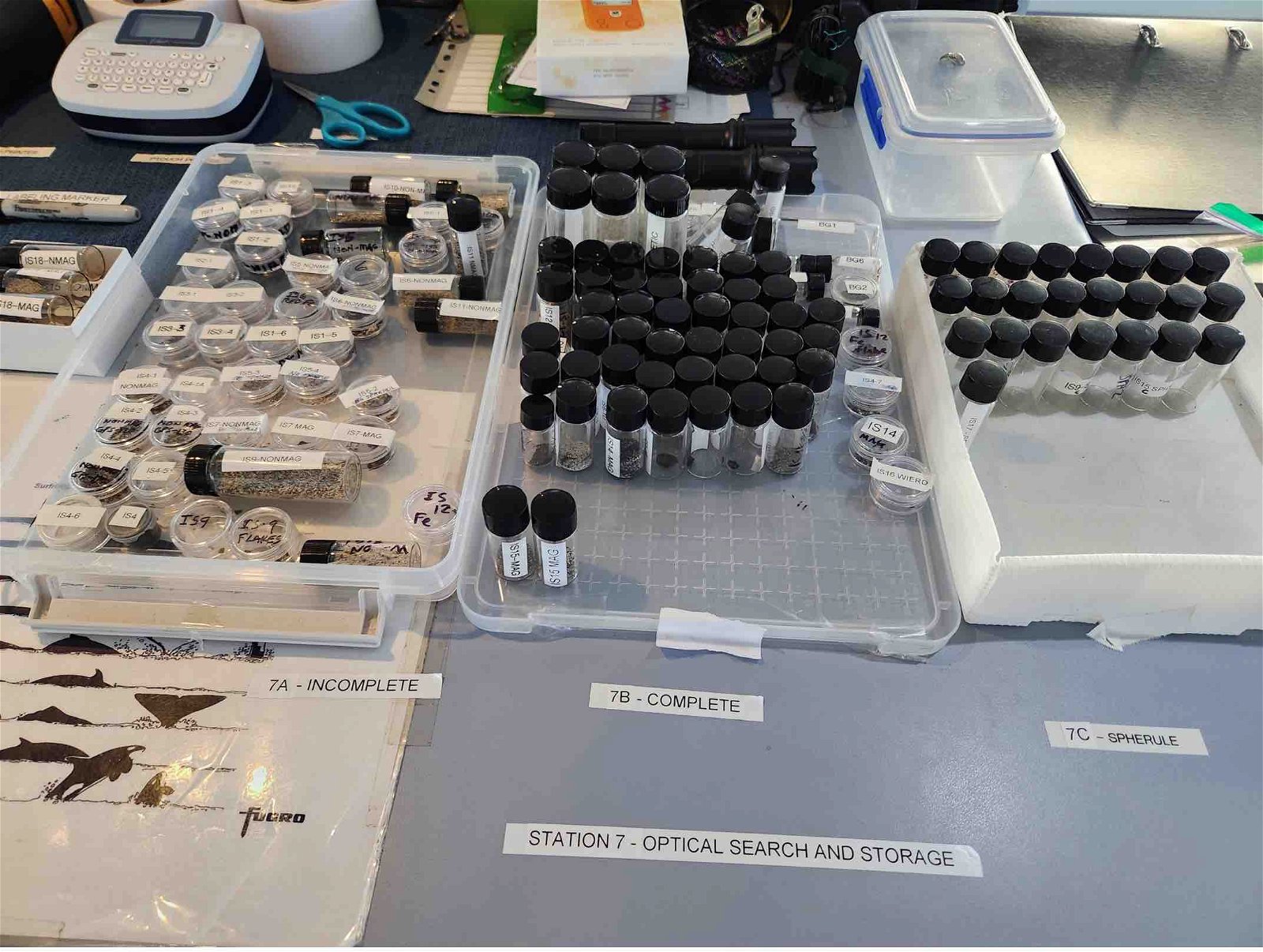

The sample shows some anomalies. There are some shards of corroded iron and large magnetized fragments. We retrieved a huge 3 grams piece that shares the abundance pattern of our spherules close to the IM1 path. If related to IM1, it would dominate the total mass retrieved so far in spherules by a factor of a thousand. We plan to analyze the element and radioactive-isotope compositions of all the materials retrieved with state-of-the-art diagnostics upon our return to the US towards the end of this week.
One of the spherules collected away from M1’s path shows an unusually high abundance of 10% by mass for Indium. This rare element which has a similar abundance to silver in the Earth’s crust, is used for many semiconductor applications.
We have two days left to collect as many spherules as we can and sample a few runs in control regions away from IM1’s path. I will keep reporting on our findings on this outlet as an opportunity to provide an inside view of how science is done. Today, I was informed by Jesus Diaz that my reports are being translated into Spanish. The translation received more than half a million unique views over the past week and inspired his son to discuss IM1 in a summer camp at the National Natural History Museum in Madrid. Jesus started his email with the words, “Felicidades! I can’t be happier for the success of your mission. Reading your diary has been a source of joy every day.” He went on to say: “Your expedition has reminded me of a poem, “The Diamond of a Star” by the great Spanish writer Federico García Lorca, who was killed by fascists for the mere fact that he thought differently:
The diamond of a star
has cut strips into the deep sky,
The bird of light that wants,
can escape from the universe
It can fly away from the huge nest
where it was a prisoner for ages
without knowing that it is tied to
a chain around the neck.
Extraterrestrial hunters
are hunting the stars,
The solid silver swans
bathing in the water of silence.”
In my final class of the spring semester at Harvard University, I asked my students for advice on what to do if we find an extraterrestrial gadget. Would you press a button on it? Half of the students recommended pressing buttons to see what happens, and the other half expressed caution about the risk associated with the unknown. In the end, one of the students asked for my take. I replied that I would bring the gadget to a laboratory and examine its content before engaging with it. The default engagement rule for functioning interstellar devices is to treat them with the utmost respect as if they were intelligent beings unless proven otherwise.
In the best-case scenario, we will be filled with awe staring at reflections of our technological future, like a cave dweller staring at a cell phone. Ultimately, our artificial intelligence (AI) systems might imitate those of extraterrestrials and enable a quantum leap in our capabilities. This will be the AI-AI version of Alan Turing’s AI-human imitation game.
Diary of an Interstellar Voyage, Report 30 (June 26, 2023)
The documentary director, Jason Kohn, asked me after my morning jog at sunrise on the deck of Silver Star: “Are you running away or towards something?” I answered: “Both. I am running away from some of my colleagues and towards a higher intelligence in interstellar space.”
Over the past couple of weeks, we have been searching for the remains of the first recognized interstellar meteor, IM1, which had material strength above all known space rocks and was moving faster than 95% of all stars in the vicinity of the Sun. The possibility that it might have been technological in origin brought me to the Pacific Ocean along with a team of almost two dozen researchers and support staff, arguably the best in the world. And most importantly, it looks like we have recovered traces of these remains. Now we need to bring them back to the Harvard College Observatory and analyze their element composition and radioactive isotope abundances.
The interstellar origin of IM1 was already established by its high velocity relative to the Sun. This was confirmed with a statistical confidence of 99.999% in a formal letter from the US Space Command under the Department of Defense (DoD) to NASA.
The immediate task is to confirm the interstellar origin of the spherules we collected from the ocean floor by showing that they lack short-lived isotopes because of their long journey in interstellar space. In addition, we need to show that its element abundance pattern is different from solar system rocks. We intend to test these telltale signatures with state-of-the-art instruments upon our return to the US towards the end of this week.
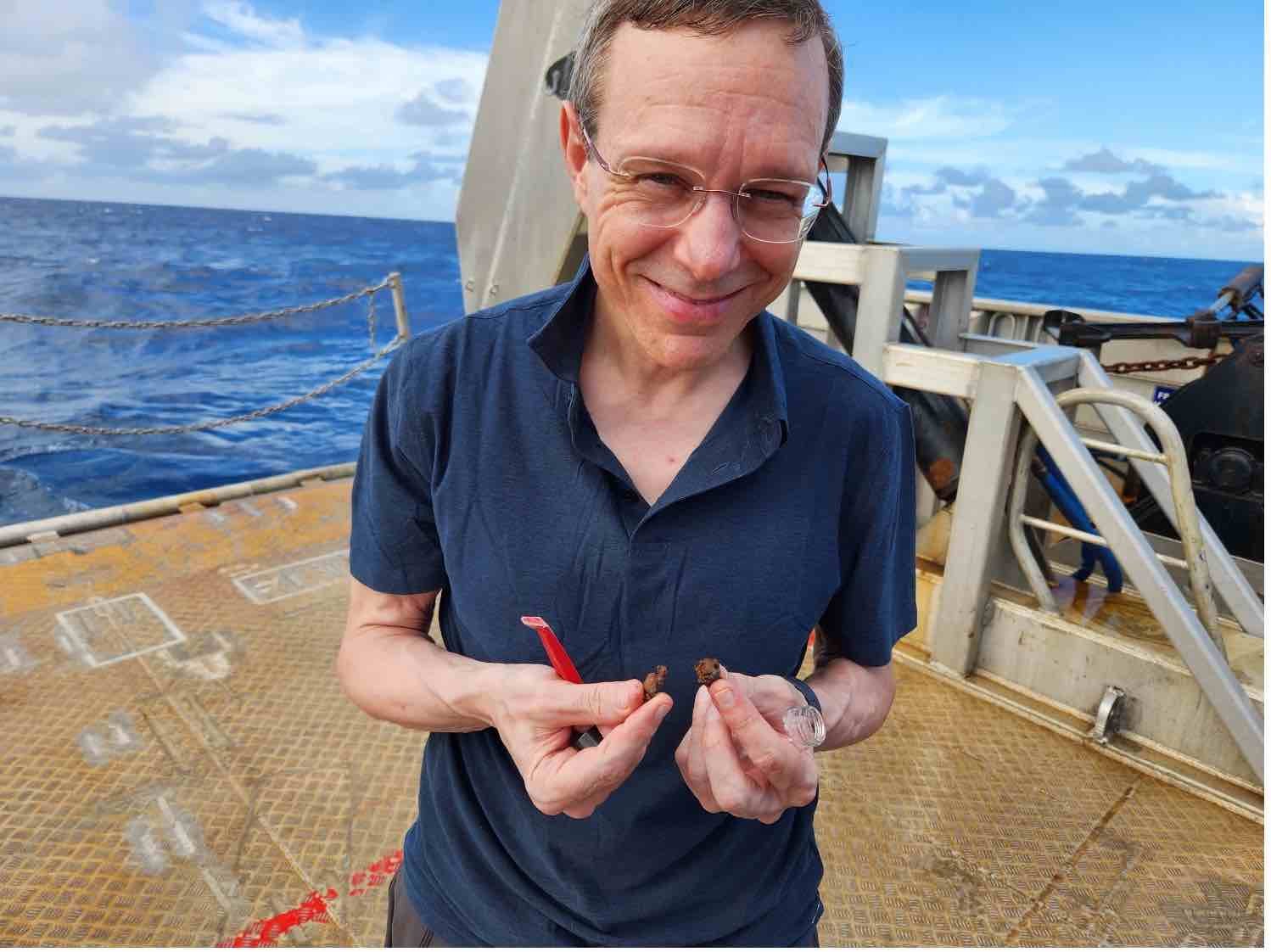

We retrieved the magnetic material from Run 21 of the magnetic sled a few minutes ago. This run continued farther along the likely path of IM1, where larger fragments are supposed to be scattered. We approached the sled and noticed two big objects with non-spherical shapes attached to its front section magnets. If these are related to IM1, they would account for most of the mass residue we recovered so far from IM1, totaling thousands of times more total mass than the spherules of size 300 microns. If related to IM1, they would allow us to get exquisite precision on the make-up of the meteor.
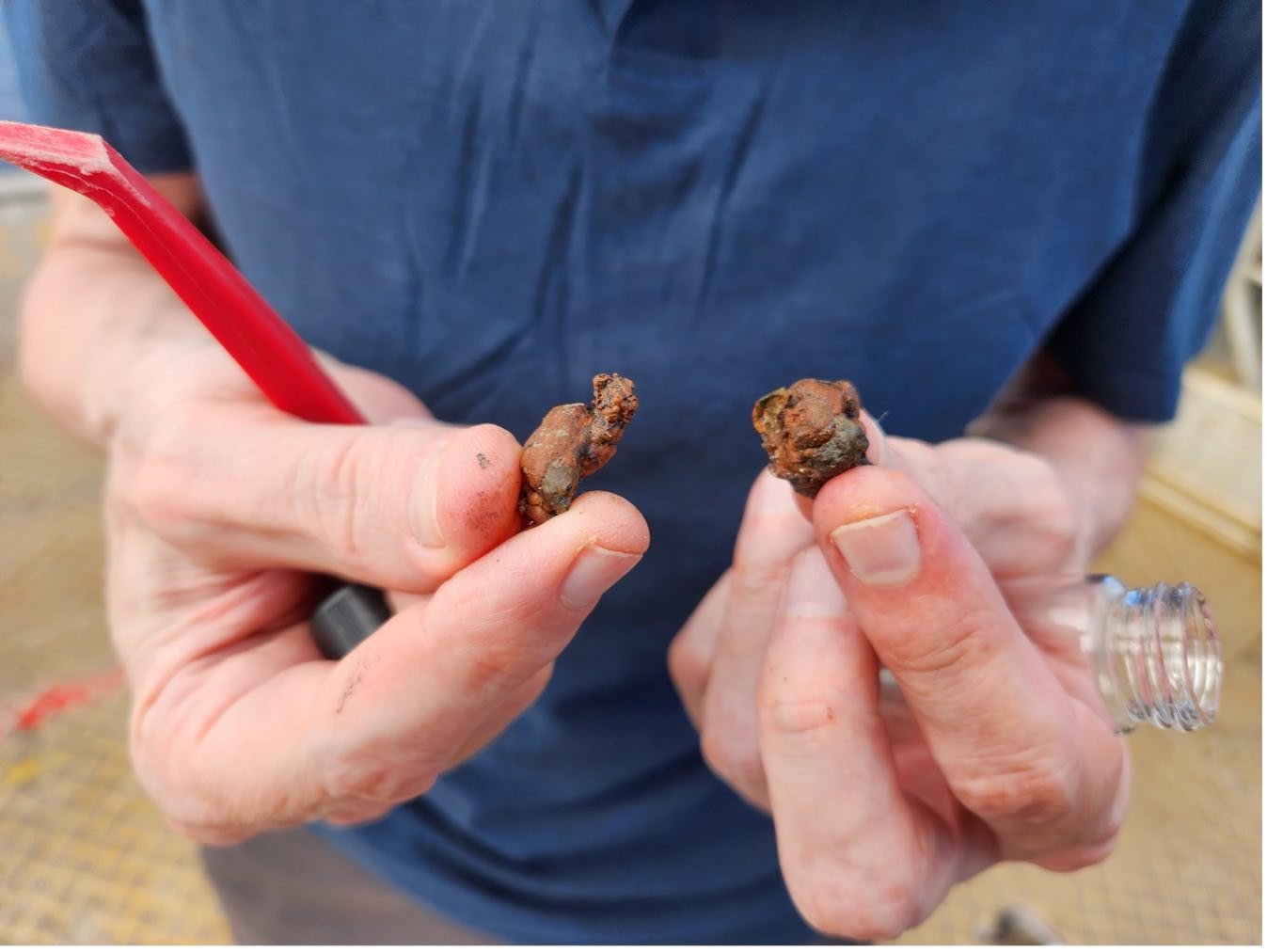

Together with Art Wright, we reviewed the existing data on spherule abundance and sizes in all runs. We concluded that the meteor trail started in a narrow band of 50-micron particles near the intersection of the DoD error box with the likely path of IM1 based on seismometer data from Manus Island. The trail broadened to a few kilometer-wide spray of 300-micron particles around the middle of the likely IM1’s path and ended with larger particles across a 5-kilometer region to the northeast region above the original seismometer arc for IM1’s fireball location.
After demonstrating the interstellar origin in these three independent ways, there should be no doubt that the material we collected with our magnetic sleds is from IM1.
This morning I assigned my daughter, Lotem, who was admitted to Harvard College and is taking an internship at Harvard’s Earth & Planetary Department this summer, the task of searching for more spherules and finding them as shiny metallic marbles that may have been missed on the scale down to 50 microns.
The biggest question is whether IM1 was natural or technological in origin. This question may be addressed by the materials we already possess. But its definitive proof will come from finding a remnant object at the bottom of the ocean with a 30-kilohertz sonar. We can circle that potential location and survey it in our next expedition.
One way or another, we will learn something new about the stars by exploring the ocean. Ad Astra!
Avi Loeb is the head of the Galileo Project, founding director of Harvard University’s – Black Hole Initiative, director of the Institute for Theory and Computation at the Harvard-Smithsonian Center for Astrophysics, and the former chair of the astronomy department at Harvard University (2011-2020). He chairs the advisory board for the Breakthrough Starshot project and is a former member of the President’s Council of Advisors on Science and Technology and a former chair of the Board on Physics and Astronomy of the National Academies. He is the bestselling author of “Extraterrestrial: The First Sign of Intelligent Life Beyond Earth” and a co-author of the textbook “Life in the Cosmos,” both published in 2021. His new book, titled “Interstellar,” is scheduled for publication in August 2023.

